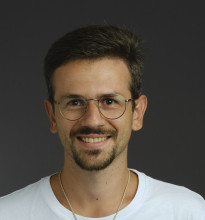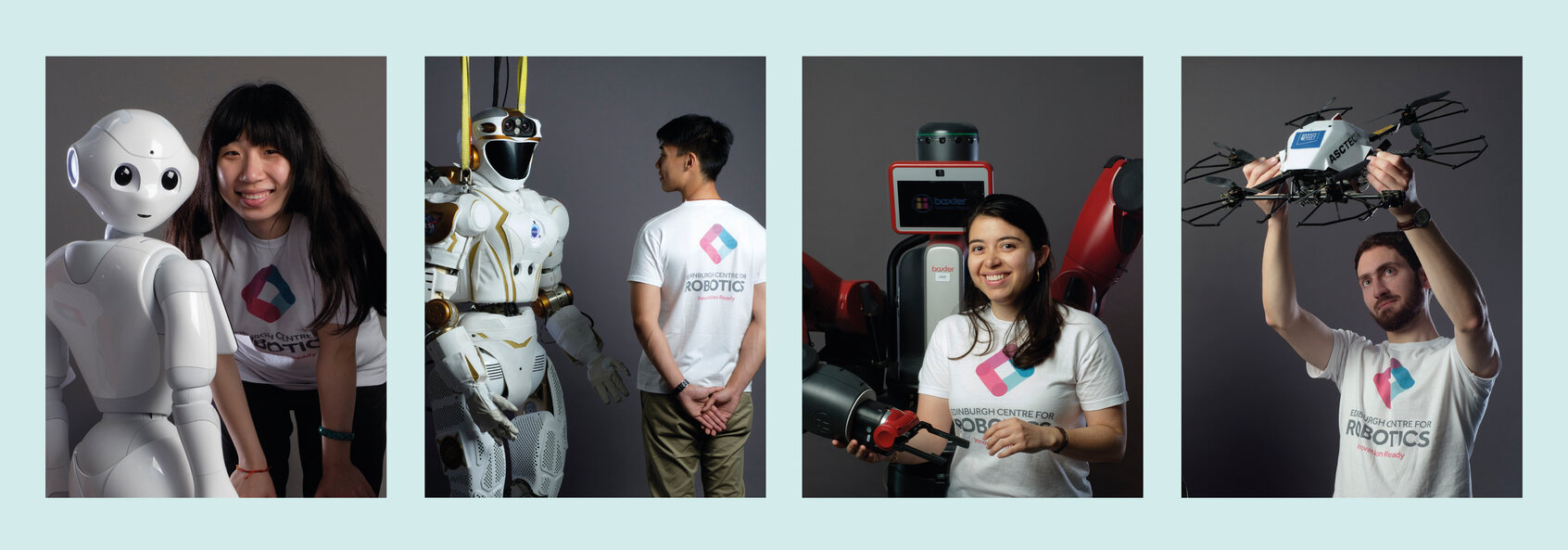Evripidis Gkanias
Historically, reinforcement learning is a branch of machine learning founded on observations of how animals learn. This involved collaboration between the fields of biology and artificial intelligence that was beneficial to both fields, creating smarter artificial agents and improving the understanding of how biological systems function. The evolution of reinforcement learning during the past few years was rapid but substantially diverged from providing insights into how biological systems work, opening a gap between reinforcement learning and biology. In an attempt to close this gap, this thesis studied the insect neuroethology of reinforcement learning, that is, the neural circuits that underlie reinforcement-learning-related behaviour in insects. The goal was to extract a biologically plausible plasticity function from insect-neuroscience data, use this to explain biological findings and compare it to more standard reinforcement learning models. Consequently, a novel dopaminergic plasticity rule was developed to approximate the function of dopamine as the plasticity mechanism between neurons in the insect brain. This allowed a range of observed learning phenomena to happen in parallel, like memory depression, potentiation, recovery, and saturation. In addition, by using anatomical data of connections between neurons in the mushroom body neuropils of the insect brain, the neural incentive circuit of dopaminergic and output neurons was also explored. This, together with the dopaminergic plasticity rule, allowed for dynamic collaboration amongst parallel memory functions, such as acquisition, transfer, and forgetting. When tested on olfactory conditioning paradigms, the model reproduced the observed changes in the activity of the identified neurons in fruit flies. It also replicated the observed behaviour of the animals and it allowed for flexible behavioural control. Inspired by the visual navigation system of desert ants, the model was further challenged in the visual place recognition task. Although a relatively simple encoding of the olfactory information was sufficient to explain odour learning, a more sophisticated encoding of the visual input was required to increase the separability among the visual inputs and enable visual place recognition. Signal whitening and sparse combinatorial encoding were sufficient to boost the performance of the system in this task. The incentive circuit enabled increasing confidence when familiar places were presented in a sequence but not necessarily in the correct order. Finally, the proposed model was challenged in delayed reinforcement tasks, and preliminary results suggested that the temporal resolution of the task is crucial for meaningful memory dynamics.
During his bachelor thesis in 2013 at the Aristotle University of Thessaloniki, Evripidis had his first experience in machine learning and artificial intelligence, under the supervision of Dr Grigorios Tsoumakas; he explored the performance of Deep Belief Networks (DBNs) on multi-label classification problems, including medical, image, sound and text datasets. In July 2013, he achieved the 1st class honours BSc degree in the same university with a specialisation in Information Systems. In May 2014, Evripidis started working as a research assistant on human motion analysis at the Centre of Research and Technology - Hellas (CERTH) under the supervision of Dr Petros Daras, when he realised his passion for research. He was working on motion analysis of athletes performing sports, trying to use machine learning to train a coach that gives hints of how to improve their performance. Later, in September 2015, he decided to extend his knowledge of artificial intelligence by joining a homonymous master's programme at the University of Edinburgh under the UK/EU masters scholarship awarded from the same university. It was then when he met Prof. Barbara Webb, who introduced him to the multidiscipline field of bio-robotics and insect robotics. She supervised his master thesis, where he successfully tried to model the evasion behaviour of the Australian fiddler crabs using a data-driven approach and semi-supervised learning. He graduated with distinction from the School of Informatics awarding the specialisation of Machine Learning in September 2016. Right after, he started working on building a robot that imitates the olfactory learning mechanism of the Drosophila larva with professor Webb as his advisor. While in the same institute, in March 2017 he started working on designing and modelling the celestial compass neural mechanism of the desert ants, under the same advisor and in collaboration with the University of Lincoln and the University of Sheffield (Dr Michael Mangan). His passion for the function of insect brains, bio-robotics and computational modelling led him to enrol on the ECR in September 2018, when he started his PhD. He is currently fascinated by the function of the mushroom body in the insect brain, how memories are established there and its multimodal integration mechanism. Therefore, he tries to understand and model it using computational intelligence mechanisms under the supervision of Professor Webb.
Research Interests:
Probabilistic Machine Learning, Information Theory, Multimodal Integration, Computer Vision, Learning and Adaptation
Education:
2015 - 2016 ⚮ MSc in Artificial Intelligence and Machine Learning (with Distinction), the University of Edinburgh, United Kingdom
2008 - 2013 ⚮ BSc (Hons) in Computer Science and Information Systems, Aristotle University of Thessaloniki, Greece
Working Experience:
2022 - present ⚮ Research Associate, the University of Edinburgh, United Kingdom
2017 - 2018 ⚮ Research Associate, the University of Sheffield and the University of Edinburgh, UK
2016 - 2017 ⚮ Research Assistant, the University of Edinburgh, United Kingdom
2014 - 2015 ⚮ Research Assistant, Centre of Research and Technology - Hellas (CERTH), Greece
Oral presentations:
2021. June. How flies acquire, forget and assimilate memories: a computational perspective. In Mushroom Body Meeting. online.
2019. November. From skylight input to behavioural output: a computational model of the insect polarised light compass. In International Navigation Conference. Edinburgh, UK
2017, July. Predator Evasion by a Robocrab. In Conference on Biomimetic and Biohybrid Systems, Stanford University, CA.
Posters:
Gkanias, E., & Webb, B. 2022, October. How the fan-shaped body can integrate differential familiarity for route following in desert ants. Structure and Function of the Insect Central Complex, Janelia Research Campus, Ashburn, VA, USA.
Gkanias, E., & Webb, B. 2022, July. How could the mushroom body and central complex combine for visual homing in insects? In International Congress of Neuroethology, Lisbon, Portugal.
Gkanias, E., McCurdy, L. Y., Nitabach, M. N., & Webb, B. 2022, March. An anatomically accurate circuit for short- and long-term motivational learning in fruit flies. In Cosyne Conference, Lisbon, Portugal.
Gkanias, E., McCurdy, L. Y., Nitabach, M. N., & Webb, B. 2021, September. The incentive circuit of the fruit fly brain: a computational perspective. In Bernstein Conference, online.
Gkanias, E., Scaria, A., Vladis, N. A., Risse, B., Mangan, M., & Webb, B. 2019, August. Robustness of a model of the insects' celestial compass in realistic conditions. In International Conference on Invertebrate Vision, Bäckaskog Slott, Sweden.
Gkanias, E., Lagogiannis, K., and Webb, B. 2018, October. Imitating the Drosophila Larval Learning Behaviour on a Robot. In Behavioral Neurogenetics of Drosophila Larva. Edinburgh, United Kingdom.
Pacella, D., Risse, B., Gkanias, E., Mangan, M., and Webb, B. 2018, July. Neural models of ant navigation in a realistic 3D world. In International Conference of Neuroethology. Brisbane, Australia.
List of publications:
Gkanias, E., McCurdy, L. Y., Nitabach, M. N., & Webb, B.. (2022). An incentive circuit for memory dynamics in the mushroom body of Drosophila melanogaster. eLife , 11, e75611.
Schwarz, S., Clement, L., Gkanias, E., & Wystrach, A. (2020). How do backward-walking ants (Cataglyphis velox) cope with navigational uncertainty?. Animal Behaviour, 164, 133-142.
Gkanias, E., Risse, B., Mangan, M. and Webb, B., 2019. From skylight input to behavioural output: a computational model of the insect polarised light compass.PLoS Comput Biol 15(7): e1007123.
Stouraitis, T., Gkanias, E., Hemmi, J.M. and Webb, B., 2017, July. Predator Evasion by a Robocrab. In Conference on Biomimetic and Biohybrid Systems (pp. 428-439). Springer, Cham.


